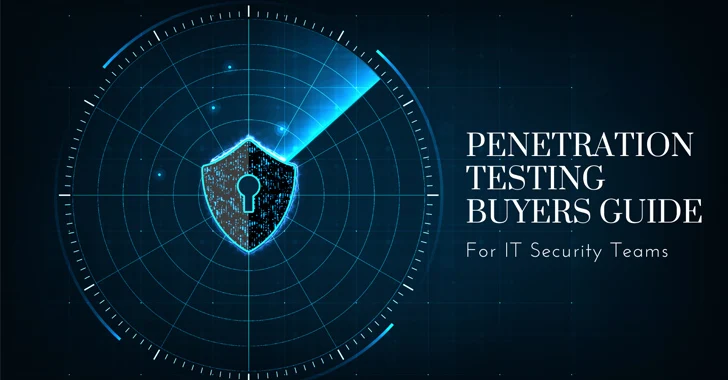In the prevailing security landscape, it is imperative for nearly every organization to undertake network penetration testing, before a breach happens, and one of the major prevailing factors for smaller firms is the Pentest Cost. This strategic examination is not only cost-effective but also expeditious, with the majority of the effort concentrated in the initial phases of scoping, sizing, and contractual arrangements. While there may be subsequent remediation efforts, this low-effort, high-reward engagement serves as an early warning system, identifying control deficiencies that could potentially lead to a security breach.
However, determining the appropriate expenditure for a penetration test can be challenging. The absence of standardized pricing leads to significant variations in quotes from different vendors. Getting the suitable cost necessitates a comprehensive understanding of the test’s requirements and diligent comparison of proposals with varying scopes.

This article serves as an all-encompassing and impartial guide on the anticipated costs of network penetration testing in 2023, elucidating the primary factors contributing to expenses and offering insights into managing and reducing costs effectively. By the conclusion, a clearer comprehension of the potential costs of a penetration test for your organization will be attained.
Scope for Network Penetration Testing:
Before delving into a typical penetration test methodology, it is crucial to differentiate between network penetration testing and vulnerability assessments. While a vulnerability assessment identifies potential vulnerabilities, a penetration test aims to exploit these vulnerabilities, individually or collectively, to demonstrate their impact within the environment. The goal is to reveal security gaps and assess the potential repercussions of a security breach. A vulnerability assessment, on the other hand, aims to identify vulnerabilities without fully exploiting or chaining them together, often relying on automated scans with basic manual validation.
Going deeper into penetration testing, the scope and type of test can vary. In network penetration testing, it may take the form of an external penetration test, revealing what an external malicious entity could access, or an internal penetration test, showcasing potential actions of a malicious actor within the network. Both tests yield equivalent results, demonstrating concrete evidence of vulnerabilities being exploited.
Engaging an external firm involves a scoping process to identify goals, size, test type, and overall complexity. Once agreed upon, the testing process involves reconnaissance to identify any missed elements, active automated testing for initial vulnerability identification, validation testing through manual testing against vulnerabilities, and reporting, where the tester creates a narrative detailing vulnerabilities and exploits, aiding in prioritizing remediation. Read on for more on Pentest Cost…
Network PenTest Cost Benchmarks:
The costs of network penetration testing exhibit substantial variability, influenced by the unique architecture and management of each organization. Pentest cost is recognizing that consultancy services offer a manual skill set and a defined process, organizations can anticipate costs for a moderately to low-level complex network penetration test to fall within the range of $15,000 to $50,000 per engagement.
Factors contributing to overall costs include:
- Scope: The desired type of network penetration testing (external or internal) influences the total effort required. Internal tests, targeting a larger attack surface, demand more extensive effort, including attacks against internal systems not exposed externally.
- Complexity: Testing methodology, classified into white-box, black-box, or red team testing, adds or reduces complexity. White-box testing relies on open communication, black-box testing involves minimal information, and red team testing, suitable for mature organizations, focuses on avoiding detection.
- Environment Size: The size of the network or organization affects testing costs. Larger environments with more IP addresses, systems, and assets necessitate additional time for both automated and manual testing.
- Report Quality: The type and extent of reporting required, such as an attestation letter, detailed exploit steps, or individual reports, impact engagement costs. Additional reporting efforts often contribute to higher costs, although internal teams may assist with some aspects.
How Costs Vary Among Vendors:
Understanding the variance in penetration testing costs among vendors requires insight into common contracting models. The three prevalent pricing models are fixed cost, time & material, and credit-based.
- Fixed Cost: The most common model ensures a fixed price agreed upon, providing low-risk engagement for the organization, with the consultancy responsible for any overages.
- Time & Material (T&M): This model places the risk of overages on the organization, as costs are based on the hours used, regardless of the estimated hours.
- Credit-Based: This model offers the organization the flexibility to buy capacity upfront without specifying the type or timing of the test. Bulk purchases often come with substantial discounts.
Vendors impact service costs due to the commoditization of network penetration testing. Low-budget services often leverage automated testing with limited manual efforts to meet regulatory demands. In contrast, high-tier services focus on highly technical and manual testing, resulting in significantly higher prices. Pricing discrepancies among vendors can be substantial, with one company offering a week-long penetration test for $10,000, while another proposes a three-week effort at $30,000.
Testing variations extend to internal penetration testing, where costs can escalate, considering factors like remote-friendly services or onsite testing preferences. Travel costs, associated with onsite testing, can significantly influence the overall expense. Read on for more on a Pentest Cost.
Variations Across Industries and Architectures:
Two industries, manufacturing, and industrial networks, stand out for potentially increasing the overall testing effort and cost. Limited automated tools for industrial networks and the absence of non-production environments contribute to heightened manual testing efforts, mainly due to the fragile nature of these systems and the potential for significant revenue loss during downtime.
Another factor affecting pentest cost is the architectural choice of cloud services. Despite the familiarity of cloud technology, its diverse implementations among organizations, compounded by distinct underlying technologies of cloud service providers, necessitate highly skilled resources for quality testing.
Strategies to Reduce Penetration Testing Costs:
Understanding that network penetration testing involves contracting consultants to perform tasks, the key to cost management lies in limiting the total time dedicated to the test. While reducing the scope or time may seem tempting to save costs, caution is advised, as it may compromise the depth and quality of testing.
For organizations facing initial budget constraints, a prudent approach involves limiting the scope to critical systems or a sample within the environment. This ensures a thorough test while allowing for effective cost management. A sample approach can be particularly efficient for large organizations, as issues identified in one operating system may apply to others of the same version.
Alternatively, if no low-cost penetration testing program is available, downgrading to a vulnerability assessment at a lower cost may be considered, although it comes with trade-offs in terms of depth and rigor. Read on for more on a Pentest Cost.
Costs vs. Benefits of Penetration Testing Services:
When evaluating the operational cost of engaging in network penetration testing, considerations extend beyond immediate expenses. Compliance with security standards and regulations, such as those mandating penetration testing, is essential. Organizations are increasingly required to demonstrate due diligence in understanding their network-level risk exposure.
Engaging in network penetration testing can be justified by the imperative to limit legal exposure, given the substantial fines associated with non-compliance in many regulations. While regulation provides one perspective, the risk associated with not conducting testing is a critical factor. Extensive research highlights a direct correlation between the absence of penetration testing and actual security breaches.

The potential impact of a security breach goes beyond immediate operational challenges, affecting reputation, customer relations, insurance, and employee retention. Therefore, when evaluating the total cost of network penetration testing, organizations are encouraged to conduct a thorough cost-benefit analysis, factoring in potential revenue loss and operational expenses associated with recovering from a breach. Invariably, the cost of a penetration test pales in comparison to the potential aftermath of a security breach. This is my post on the proverbial Pentest Cost.
Leave a Reply